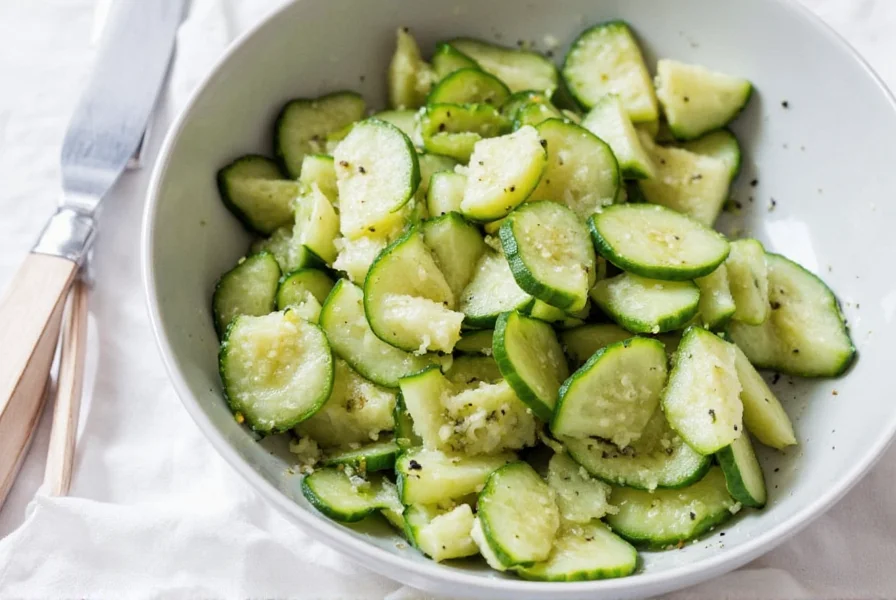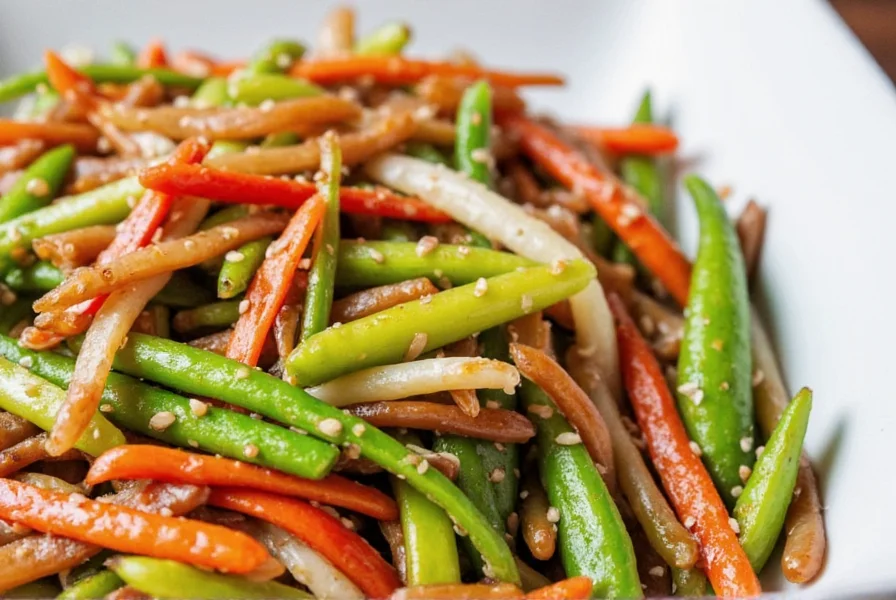Learn how to make authentic Korean cucumber salad (oi muchim) with this easy step-by-step recipe. Perfect for any meal, this refreshing dish combines crisp cucumbers with a tangy, spicy dressing in just 15 minutes. Follow these simple instructions for a delicious side dish that's sure to impress.
Table of Contents
- Step-by-Step Recipe
- Essential Ingredients
- Expert Cooking Tips
- Buying Guide for Key Ingredients
- Frequently Asked Questions
Step-by-Step Recipe
- Prepare cucumbers: Wash 2 medium Japanese cucumbers. Slice into 1/4-inch rounds or half-moons. If using regular cucumbers, peel and deseed to reduce water content. Lightly salt slices and let sit for 5 minutes, then pat dry.
- Mix dressing: In a small bowl, combine 2 tbsp soy sauce, 1 tbsp rice vinegar, 1 tsp sesame oil, 2 minced garlic cloves, 1-2 tsp gochugaru (adjust for spice), and 1 tsp sugar. Stir until sugar dissolves.
- Combine ingredients: Place cucumbers in a large bowl. Pour dressing over them and toss gently to coat evenly. Let rest for 10-15 minutes to absorb flavors.
- Finish and serve: Sprinkle with 1 tsp sesame seeds. Serve chilled as a refreshing side dish with rice, grilled meats, or as a standalone snack.
Essential Ingredients for Korean Cucumber Salad
Korean cucumber salad relies on simple, fresh ingredients that create a perfect balance of sweet, sour, salty, and spicy flavors. Here's what you need:
1. Cucumbers
Japanese cucumbers are ideal for their crisp texture and minimal seeds. Look for firm, dark green cucumbers without soft spots. Their thin skin and fewer seeds prevent sogginess.
2. Soy Sauce
Use high-quality Japanese or Korean soy sauce for authentic umami. Low-sodium options work well for controlled saltiness. Avoid cheap alternatives that taste overly salty.
3. Rice Vinegar
Rice vinegar provides the signature tangy kick. Choose unseasoned rice vinegar—never white vinegar, which is too harsh. The mild acidity balances the other flavors perfectly.
4. Sesame Oil
Cold-pressed sesame oil adds rich, nutty depth. Use it sparingly (1 tsp) as it's potent. Toasted sesame oil enhances flavor without overpowering the dish.
5. Garlic
Freshly minced garlic is essential for aromatic depth. Avoid pre-minced versions, which lose potency. Crush cloves with the flat side of a knife for maximum flavor release.
6. Gochugaru (Korean Chili Flakes)
Authentic gochugaru provides vibrant red color and balanced heat. For milder versions, use 1 tsp; for spicier, increase to 2 tsp. Avoid substituting with regular chili powder.
7. Sugar or Honey
A touch of sweetness (1 tsp) balances acidity and spice. Honey adds floral notes, while sugar provides clean sweetness. Vegan option: use maple syrup.
8. Sesame Seeds
White sesame seeds add visual appeal and nutty crunch. Toast them lightly for enhanced flavor before sprinkling on top.
| Ingredient | Where to Buy | Features | Best For |
|---|---|---|---|
| Cucumbers | Local grocery stores, Asian markets | Firm, unblemished, with a fresh smell | Any meal that needs a crunchy texture |
| Soy Sauce | Supermarkets, specialty stores | High-quality, organic options available | Adding umami to dishes |
| Rice Vinegar | Asian markets, health food stores | Light, slightly sweet, and mild | Balancing flavors in salads and dressings |
| Sesame Oil | Specialty shops, online retailers | Cold-pressed, aromatic, and rich | Enhancing flavor and aroma |
| Gochujang / Gochugaru | Asian supermarkets, Korean grocery stores | Spicy, pungent, and full of flavor | Adding heat and complexity to dishes |
Expert Cooking Tips
- Prep cucumbers properly: Salting and drying prevents sogginess. For extra crunch, soak in ice water for 10 minutes before salting.
- Adjust spice level: Mix gochugaru with a pinch of smoked paprika for depth without excessive heat.
- Make ahead: Prepare dressing 1 hour in advance to let flavors meld. Toss with cucumbers just before serving for maximum crispness.
- Variations: Add thinly sliced carrots or radishes for extra texture. Top with chopped scallions for fresh onion notes.
Frequently Asked Questions
- What are the exact measurements for the 7 key ingredients?
A standard recipe uses 2 medium cucumbers, 2 tbsp soy sauce, 1 tbsp rice vinegar, 1 tsp sesame oil, 2 minced garlic cloves, 1-2 tsp gochugaru (or 1 tbsp gochujang), 1 tsp sugar, and 1 tsp sesame seeds. Adjust ratios to taste. - Can I substitute regular cucumbers for Japanese cucumbers?
Yes, but English cucumbers work best. Peel and deseed regular varieties to reduce excess water. Salting sliced cucumbers for 10 minutes before rinsing also prevents sogginess. - How long does Korean cucumber salad stay fresh?
Store in an airtight container in the refrigerator for up to 2 days. The cucumbers will soften over time, so enjoy within 24 hours for optimal crunch. - Is there a vegan alternative to honey in the dressing?
Absolutely. Maple syrup or agave nectar make excellent vegan substitutes. Use the same quantity (1 tsp) as honey for balanced sweetness. - How can I reduce the spiciness without losing flavor?
Replace half the gochugaru with smoked paprika for depth without heat. Alternatively, increase the rice vinegar and sugar slightly to counterbalance spiciness while maintaining the sweet-sour profile.












 浙公网安备
33010002000092号
浙公网安备
33010002000092号 浙B2-20120091-4
浙B2-20120091-4